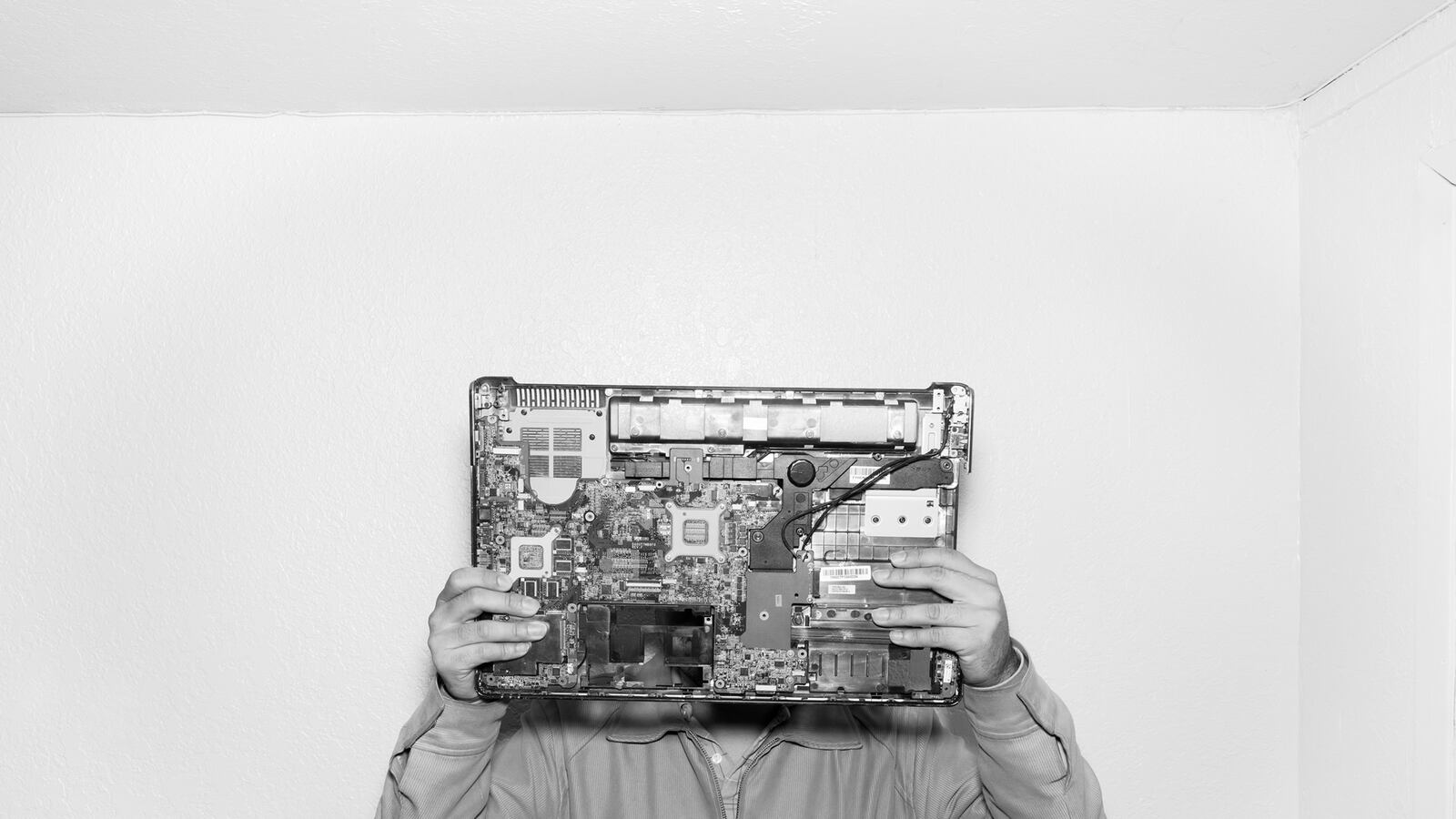
For most of America, Silicon Valley is the center of modern innovation, the place that gave the world computers, the iPhone, Google, and Facebook. For part of a new San Francisco Museum of Modern Art off-site exhibition, Project Los Altos: SFMOMA in Silicon Valley, photographer Alec Soth set about capturing life in the mythical region. For a couple of weeks last spring, Soth shot not only the campuses of tech giants Hewlett-Packard, Google, and Facebook, but also the every-day parts of the area that don’t get much attention—its restaurants, computer repair shops, and parks.
“The ideas are moving faster than the physical place, and as a photographer because I have to deal with surfaces and looking at the world out there, it’s a tricky thing to try to document,” said Soth. “As much as anything I try to photograph this feeling of the cloud, or of ideas, trying to contain ideas. I was trying to photograph that as much as I was trying to photograph actual, physical things.”
Capturing the feeling of a place is nothing new for Soth, who has photographed the oil boom in North Dakota, the results of Detroit’s economic misfortunes, and life around the Mississippi River. “Going from these economic conditions to Silicon Valley being so unique in that it’s this boom town where the product is invisible, is so different,” said Soth.
GALLERY: ALEC SOTH DOCUMENTS LIFE IN SILICON VALLEY (PHOTOS)
After SFMOMA commissioned Soth for the project, he worked with the museum to gain access to tech companies. “Google is definitely not easy to get into, Facebook was a bit easier for whatever reason,” said Soth. “Generally in all this work I’ve done all over America, it’s just harder to penetrate areas of wealth.” Soth also searched for events that were taking place in the area during the time that he was there.
The moments that Soth captured in the 20 black-and-white photographs on display in the exhibition are far from what one would probably imagine when thinking of Silicon Valley. Fog rolls over a desolate Mountain View road with a Google street sign; a group of restaurant patrons stare at a screen inside a Round Table Pizza in Santa Clara; a lone man walks along the concrete pavement of Facebook’s main campus in Menlo Park.
“I think people will have a new perspective in Silicon Valley,” said SFMOMA’s curator of photography, Corey Keller. “Alec’s pictures aren’t about the triumph of technology or the genius inventors, but about the people who live and work there. Also, he’s presented a kind of outsider’s view, coming to the area with fresh eyes. I love the picture of the Google sign in the fog—I don’t think someone who lives here would notice how beautiful that is.”
About 25 percent of Soth’s images are dedicated to Google, which the photographer had limited access to while on a tour under the watchful eye of a Google guide. “It was made clear to me that this was a very unique situation that I was being allowed to photograph there,” said Soth. “I went through as quickly as I could and just had to put my blinders on, and I tried to focus on some things that meant something.” In the Googleplex, Soth shot a man named Jonathan quietly working behind his Apple Macbook Pro, along with a ten-week-old baby named Gaia, lying on a couch. “The Googleplex is largely how I think about Silicon Valley, which is so consumed by ideas and by the future,” said Soth.
Soth also photographed the origins of Silicon Valley’s greatest companies: the garages of Hewlett-Packard (which the company says is the birthplace of Silicon Valley) and Google, where the founders of the two companies laid the groundwork for what eventually would become their global tech giants. Soth relates the garages to a repeating cube motif in the series. “The garages were probably the most essential part of that, where the garage itself is this computer and you see nothing, and the door is a screen and inside something happened, you can’t see it,” he explained.
Soth refers to Silicon Valley as a nerdy Hollywood, in that people go there to live out their dreams. “Brilliant people from all over the world coming to this place, creating something out of nothing is inspirational, but it’s also scary as well,” said Soth. “In part because I don’t understand it, in part because it has major implications for how we live, and it’s moving so fast. It was largely a positive experience.”
Project Los Altos: SFMOMA in Silicon Valley runs through March 2, 2014. For more information, visit sfmoma.org.






